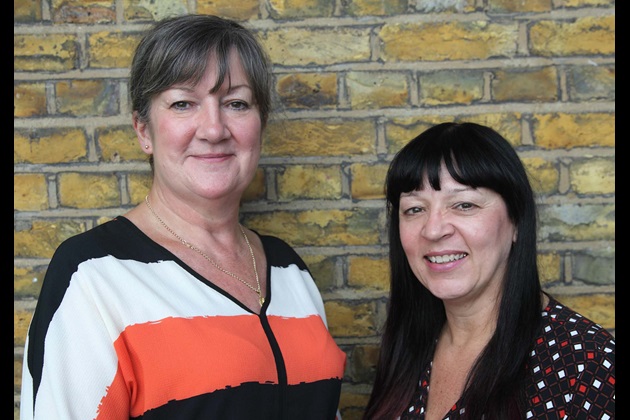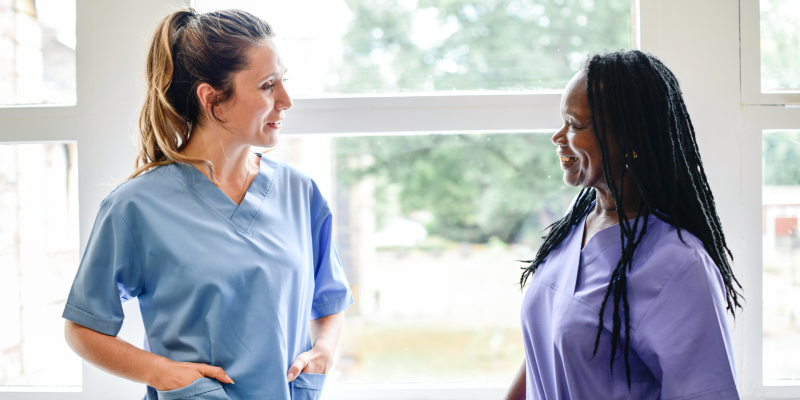The decision to accept or reject the NHS pay deal for England rested with our Trade Union Committee. So who is on the committee? And why should they make the choice?
At the start of June, elected members of the RCN Trade Union Committee met to consider the results of the RCN’s consultation on NHS pay and decide whether the College would formally accept or reject the deal.
The results of the consultation showed clear support amongst the membership for the deal and the committee therefore agreed to accept it on their behalf. RCN Council endorsed that decision later the same day.
Activate caught up with Chair of the committee Lors Allford and Vice Chair Tracey Budding to find out more about their roles.
The right decision
“Remember why we’re here – to represent the membership," said Lors as she opened discussions about the pay deal on 6 June.
The committee, formed six months earlier as part of the RCN’s governance re-structure, exists to make decisions on the RCN’s trade union functions and activities. Or as Lors puts it: “Our job is to make sure terms and conditions for nursing staff are suitable, good and fair.”
The committee has 14 members. This includes one member from each of the three countries and one from each of the nine English regions. The other two members are from the RCN’s student and health practitioner membership. All members are elected.
“We’re real members representing members' views,” says Tracey who has worked in the NHS for 35 years. “The majority of us are frontline nurses so we know what it’s like to work on the shop floor. We’re not people who sit in offices. It is a huge responsibility so I didn’t go in to this role lightly.”
We’re real members representing members' views. The majority of us are frontline nurses
Lors feels the responsibility too but she’s confident in the committee’s ability to do the job.
“It’s the first big decision we’ve had to make but it’s the right decision. We have listened to members and I believe it’s the way forward,” says Lors. “In my 42 years of nursing, we are in some of the most challenging times I’ve seen as a profession and in the NHS. This is the beginning of a very long journey to turn things around.”
Reflecting on the deal itself, Tracey says: “It’s very easy to just look at one element or how something affects you but when you look at the whole framework, there is value in it. Increasing starting salaries over the next three years will benefit recruitment.
“There is protection for unsociable hours and annual leave which I know a lot of our workforce rely heavily on. It can be confusing, especially because it’s different for everyone depending on their band and increments, but overall the deal is a good thing.
For some members this will make the difference in whether they stay in the profession or leave
“I’m at the top of my band and have been for many years but I think we’ve got to start somewhere.”
Lors points out the starker benefits of a pay increase too: “For some members this will make the difference in whether they stay in the profession or leave. For others it might mean they can pay next month’s bills or they don’t have to go to the food bank.”
Just the beginning
Like Tracey, Lors is also quick to point out that this is just the beginning, both in the fight for better pay for nursing staff and for the work of the Trade Union Committee.
“The committee has a lot of work ahead,” says Lors. “We will be reviewing the Agenda for Change framework and job descriptions. They’re being used nationally but need a complete overhaul.
“Our biggest priority is safe staffing. I work in A&E but in all areas of nursing – education, community, primary or secondary care – the biggest issue is staffing levels. Are they safe?
“For many nurses it feels like Ground Hog Day. They come in to work and nothing is getting any better. We will lose a lot of amazing young people to the profession if we don’t sort it out.”
Lors and Tracey, who have both previously been Council members, are optimistic that the RCN’s new governance structure will allow them to start addressing these issues.
In January, the Trade Union Committee and Professional Nursing Committee were formed to represent the two arms of the College reporting into RCN Council.
“I think most people become a member of the RCN because there is a balance between the professional side and the trade union side,” explains Lors. “The two concepts go hand in hand; if you get good terms and conditions for staff and people are treated fairly then you will get better outcomes for patients.
“The exciting thing about these two new committees is that each committee has clear direction and can focus their expertise. At the same time, we will still be working closely together where appropriate and the two will naturally complement each other.”
Partnership working is certainly something the whole committee is excited about.
Tracey says: “We are looking at how we can link in with the other committees, like the UK reps committee, and the branches, regions and countries, as well as members.
“There is so much knowledge out there in the RCN and this structure will allow us to bring in those experts to help us. We will be doing a lot more work to support activists and we’ll be looking at how we can grow different types of activists too.”
As a trade union, I feel it's our responsibility to make nursing a profession that people want to go into
Lors adds: “This is the time to stand united. It’s only the first chapter in bringing about much-needed change.
“As a trade union, I feel it's our responsibility to make nursing a profession that people want to go into. It’s important that employers see the benefits of a strong trade union and a professional body because without that, it will be very hard to sell nursing.
“If we’re protecting members’ terms and conditions, safe staffing etc. then they will be delivering better patient care and ultimately that is what it’s all about.”








